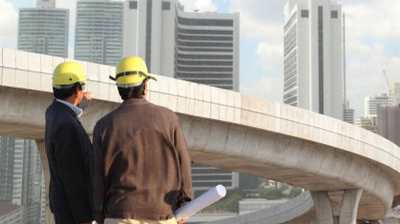Jeremie Averous's Blog, page 4
January 18, 2022
How some Japan Companies Just Stops Using Floppy Disks
This astonishing piece of news ‘Tokyo says long goodbye to beloved floppy disks‘ reminds us that certain people or institutions stick to old and reliable technology much longer than one would believe.

“Meguro Ward plans to put all work involving floppies and other physical storage media online in fiscal 2021, and Chiyoda Ward plans a similar transition within the next few years. Minato Ward moved its payment procedures from floppies to online systems in 2019.”. Reliability is mentioned as one of the reasons why this outdated media is still being used – but also probably convenience out of habit!
In general in Japan I have not been overly impressed by the modernity of IT systems, like in the US when it comes to mobile handphone networks. It is a general rule that the location where something gets invented invests a lot in the infrastructure to support the first generations of the technology and then lags when it comes to adopting newer versions of the technology, because of the sunk cost in the existing infrastructure. Whereas those territories that adopt a technology later can directly invest into the newer versions.
We constantly underestimate how older technology remains hidden at the core of our modern life. I would not be astonished that many telecommunications companies still run 20- to 30 years old equipment in some core functions, just because they are reliable and maintainable.
This reminds us that technology transition to a new generation technology is never as complete and comprehensive as what we generally think, and that innovators tend to maintain older technologies online longer.
The post How some Japan Companies Just Stops Using Floppy Disks first appeared on The Fourth Revolution Blog.January 15, 2022
How Splitting Megaprojects in Smaller, Shorter Projects Brings Huge Benefits
Following up from our posts ‘How Infrastructure Projects Cost Has Increased Dramatically in Developed Countries‘ and ‘How to Increase the Effectiveness of Infrastructure Projects in Developed Countries‘, this HBR article by Pr Bent Flyvbjerg provides some answers: ‘Make Megaprojects More Modular’

Bent Flyvbjerg is a Danish university professor that has been studying public infrastructure projects for a long time and is now professor at Oxford. He has written numerous articles showing that public infrastructure projects always have their cost underestimated and their benefits overestimated at investment decision, mainly for political reasons.
Anyway in this article, he explains the benefits of having smaller projects that also benefit from some series effect learning curve rather than going for very large, very long and one-of-a-kind projects that are necessarily going to suffer overruns and generate disappointments. “Two factors play a critical role in determining whether an organization will meet with success or failure: replicable modularity in design and speed in iteration. If a project can be delivered fast and in a modular manner, enabling experimentation and learning along the way, it is likely to succeed. If it is undertaken on a massive scale with one-off, highly integrated components, it is likely to be troubled or fail.”
Bent Flyvbjerg continues by explaining why speed is essential for megaprojects, because of our inability to predict the future beyond a few months or years. Iteration is also essential to improve, while picking existing and proven technology is also a major success factor.
There is a definite trend towards smaller infrastructure including series effect. Still, all projects cannot be made in a short time and using only proven technology. However, those are projects where we should accept a measure of cost and schedule overrun; most infrastructure projects can certainly be done using proven technology and on a smaller scale. The question of keeping consistency of a programme combining several smaller, shorter projects is also a challenge.
Still, to tackle excessive cost and delays of large infrastructure projects, splitting large projects into smaller, shorter projects using proven technology is certainly a way to go.
The post How Splitting Megaprojects in Smaller, Shorter Projects Brings Huge Benefits first appeared on The Fourth Revolution Blog.January 13, 2022
How to Use Deepfake to Promote Local Business: an Indian Application
I love this initiative in India for Diwali (one of the most important annual celebrations). A company has provided a platform allowing local businesses to generate short films promoting their business and using the image of one of the biggest stars of the country, Shah Rukh Khan. Watch the video ‘Supporting Local Retailers This Diwali | Not Just A Cadbury Ad Campaign Video‘

The idea is that anyone can insert the name of the business and a deepfake is generated with this name being inserted in the video. If can then be used for promotion purpose.
This is just the start. Expect such deepfake technology to be deployed for adds that would be personalized and adapted to your immediate location. Don’t be surprised if you get called by your name by some local star when you walk in the street, suggesting you should visit some nearby store! I hope we will just be able to turn some of it off.
The post How to Use Deepfake to Promote Local Business: an Indian Application first appeared on The Fourth Revolution Blog.January 11, 2022
How China Is Promoting a Government Spy App
This excellent Quartz paper ‘One of the world’s most popular iOS apps right now was developed by Chinese police’ exposes how chinese authorities heavily promote an app that basically spies on people phones, to the point that it is visible in download statistics.

While “targeted towards telecom scams, which are among the most rampant crimes in China. In 2020 alone, Chinese police reportedly cracked around 250,000 such cases“, “there are concerns over the extent to which the app is surveilling users.” The app is asking for a lot access and apparently is reacting whenever users do things like consulting foreign web sites.
This is an interesting example of what can happen when there are no strict laws regarding the use of personal data. Of course we all know that it is relatively easy to access phone data for someone with the capabilities to do it. However, having users installing an app with potentially a significant spying capability is something new at this scale.
This provides another example of the always delicate balance between the benefits of technology and its potential drawbacks, and how regulation is essential to protect citizens. The same issue is also of concern with Facebook and others. It is time for strict regulations to come into force that reflect our country view on personal freedom and the need for surveillance to avoid social disruption.
The post How China Is Promoting a Government Spy App first appeared on The Fourth Revolution Blog.January 8, 2022
How the Debate About Shorter Work Time Has Reignited
This Wired article promotes the 5-hours day: ‘The perfect number of hours to work every day? Five‘. Based on some experiments, the concept of compressed working is being more widely tested, sometimes with mixed results.

Some companies that have tested the concept reported mixed results. Shorter workdays result in people being more focused on their tasks, but also some stress about getting things done. There is also a debate between 4-day week and 5-hour days concepts.
Promoter of the 5-hours day assert that “Research indicates that five hours is about the maximum that most of us can concentrate hard on something. There are periods when you can push past that, but the reality is that most of us have about that good work time in us every day.” In that sense some organizations report significant effectiveness increase of having shorter days with no breaks. However “not all jobs are suitable to be done in five-hour bursts. Research may have found that people’s creativity dwindles after five hours of concentration, but not all jobs require people doing them to be creative. “There’s an awful lot of work that doesn’t require deep focus,” Pang says. In call centres, care homes and factory lines, staff are needed simply to get the work done and, as Ford Motor Company demonstrated, there is a very good reason to ask them to do it in eight-hour shifts“.
In any case, the debate about the best working timetable remains open. For creative work it would seem that shorter but more intense worktimes is favorable, and this needs then to fit around personal schedules.
The post How the Debate About Shorter Work Time Has Reignited first appeared on The Fourth Revolution Blog.January 6, 2022
How Third Workplaces Become a Trend
‘Third Workplaces’ are alternative working environments, close to home but within a dedicated working space, co-working with other people. According to this article ‘The rise of “third workplaces”‘, they are clearly on the rise. “People aren’t working from the office, but they’re not working from home either.”

Third workplaces allow to work outside of home constraints, concentrate on work in an environment that provides the possibility of such focus, coffee and sustainable, and (optionally) exchange informally with other people doing the same.
In my working environment, I have observed how this is really needed for people that don’t have the space at home to have a working desk, or have small children and can’t concentrate on their work.
According to the article, there are even startups created to benefit from the trend, not to mention older startups created around the concept of co-working spaces.
I have been working in my consulting company for 10 years not having any other office than a home office, being mostly in client’s offices and otherwise meeting people in coffees. I welcome such ‘third workplaces’ concepts and I firmly believe this will be a strong trend in the years to come.
The post How Third Workplaces Become a Trend first appeared on The Fourth Revolution Blog.January 4, 2022
How Meeting in Person Remains a Need
This excellent Atlantic article addresses the question we all ponder: ‘Do We Really Need to Meet In Person?‘. Employers generally consider that some face-to-face meeting is needed in particular for creative endeavors (see our post ‘How Face-to-Face Work is Needed for Innovation‘; employees would rather stay at home and avoid commuting.

The Atlantic article takes a clear position in favor of remote work, and provides as well interesting data. In particular “The amount of meetings doubled during the pandemic“! It is true that our days have been packed with much more interactions and the need to switch from one topic to the other.
On the other hand, I observe since we have been able to meet again with people in person, how rich those encounters are compared to remote meetings. From informal exchanges around coffee to the enhanced environment of discussion, reading body language cues and understanding the working environment of people you meet.
In particular for all commercial and business development aspects, face-to-face meetings still remain much more powerful than remote meetings in conveying messages and conviction.
I have also observed that for audits and reviews, there is much more to be captured when working in the office being reviewed than remotely, and it remains essential to travel on site to provide a good quality analysis and feedback.
I am convinced that while remote work will certainly increase compared to pre-Covid time, face-to-face work is also here to stay and develop. We will have to learn what method works best for which purpose.
The post How Meeting in Person Remains a Need first appeared on The Fourth Revolution Blog.December 30, 2021
How The Covid Crisis Is Leading to a Historical Shift in Employment
The future of the workplace is one of the big question marks at this time. Plenty of people write and contribute on this topic. In a series of posts we will explore some of those thoughts. First, on the basis of this Capitalogix blog post ‘The Rise Of Remote Work‘, let’s just observe how prevalent remote work is becoming.

This post – based on US data – shows that after the pandemic-driven transformation, remote work is appreciated by people and particularly in some industries, software & IT being of course the main adopter.
The shift in how people work is translating in what is called “the great resignation” with many people moving out of more traditional employment and changing industry. This excellent Atlantic article dated October 2021 ‘The Great Resignation Is Accelerating‘ provides data on this historical migration and changes in worker expectations. This affects in particular the hospitality industry (hotels and restaurants), but also many other industries.
I love however the conclusion of the post: “The culture of work is in a massive period of transformation. Regardless of where your specific company or industry ends up, all businesses will have to increase the amount of employee care they provide. Just as the heart of AI is still human, so is the heart of our businesses.” The point is that employee expectations about life quality has risen, and organizations have to adapt.
The Covid crisis has unexpected effects on the employment market. It is certainly only an acceleration of existing trends. Still, it will require a lot of adaptation capability for organizations.
The post How The Covid Crisis Is Leading to a Historical Shift in Employment first appeared on The Fourth Revolution Blog.December 28, 2021
How to Increase the Effectiveness of Infrastructure Projects in Developed Countries
Following up from our previous post ‘How Infrastructure Projects Cost Has Increased Dramatically in Developed Countries‘, what can be done to make those projets more effective, quicker and less costly? I believe that new approaches to authorization process, construction and project execution could be a response.

Societal requirements and expectations will continue to make it harder to settle land claims and manage stakeholder input into very large projects, which will always have their share of opponents. However, while still maintaining the rights of stakeholders, it should still be possible to accelerate the regulatory authorization process, in particular by accelerating and remove some layers of legal recourse. It has been done in France for example for offshore wind farms after the previous regulatory framework was found to create excessive delays before the project could start.
At the same time, construction approaches should be reviewed. It makes increasingly more sense in development countries to modularise projects instead of looking for stick-and-build approaches or any approach with high manual work. For example for piping, replacing large quantities of on-site welding with pre-fabrication including of modules that could then be poured in the reinforced concrete structures.
In any case, the delays and hurdles to build infrastructure projects hurt the economy and create substantial delays before the infrastructure we need is actually contributing to our well-being. Innovative and creative solutions must be developed and implemented – we can’t continue on the current trend.
The post How to Increase the Effectiveness of Infrastructure Projects in Developed Countries first appeared on The Fourth Revolution Blog.December 23, 2021
How Infrastructure Projects Cost Has Increased Dramatically in Developed Countries
This VOX article poses a great question ‘Why does it cost so much to build things in America?‘ in the context of infrastructure and mass transit construction. This can be generalized probably to all developed countries, with some differences: why has it become (relatively) so expensive to build infrastructure in those countries?

“Research by New York Federal Reserve Bank and Brown University researchers reveals that the cost to construct a “lane mile of interstate increased five-fold” between 1990 and 2008. New construction — widening and building interchanges and building new sections of road altogether — is where the bulk of the problem lies“
Reasons mentioned beyond the density of those locations where infrastructure are being built include institutional reasons (in particular, more power given to opposing groups leading to complaints and lawsuits). The article also mentions the lack of experience of government agencies and construction companies due to the lack of construction in the last decades. I personally suspect also financing mechanisms – long projects like infrastructure will get heavily burdened by financial costs if the government does not step in for part of the financing.
In any case, it is certainly the accumulation of layers of requirements in developed countries that lead to substantial delays and even more substantial increase in cost for transportation and other infrastructure building. This is a concern for our societies that need to be overcome if we want to remain competitive.
The post How Infrastructure Projects Cost Has Increased Dramatically in Developed Countries first appeared on The Fourth Revolution Blog.


